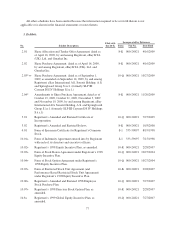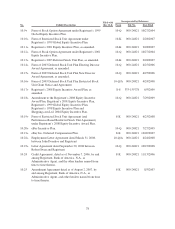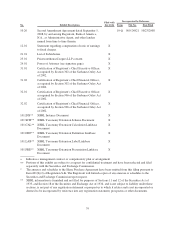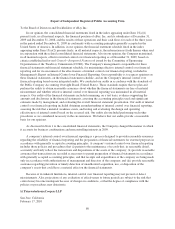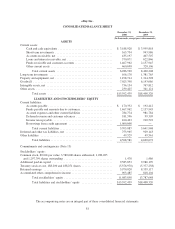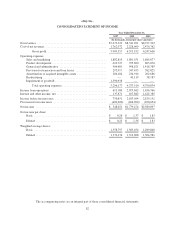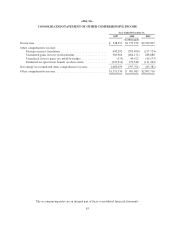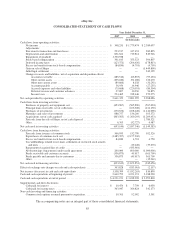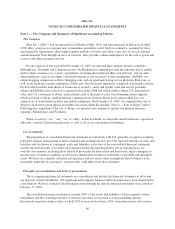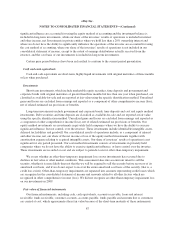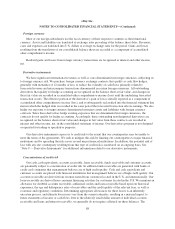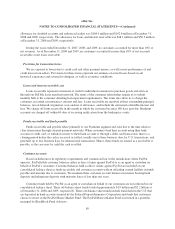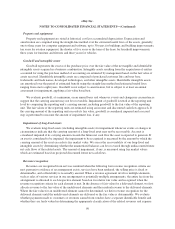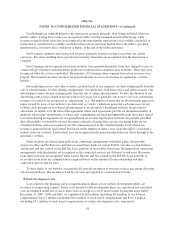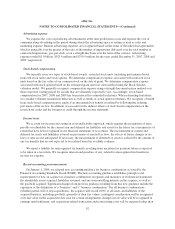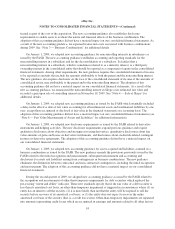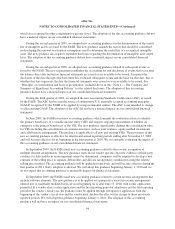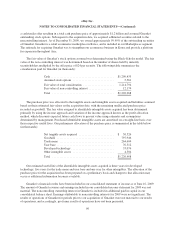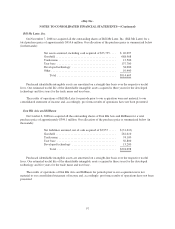eBay 2009 Annual Report Download - page 95
Download and view the complete annual report
Please find page 95 of the 2009 eBay annual report below. You can navigate through the pages in the report by either clicking on the pages listed below, or by using the keyword search tool below to find specific information within the annual report.eBay Inc.
NOTES TO CONSOLIDATED FINANCIAL STATEMENTS—(Continued)
significant influence are accounted for using the equity method of accounting and the investment balance is
included in long-term investments, while our share of the investees’ results of operations is included in interest
and other income, net. Investments in private entities where we hold less than a 20% ownership interest and
where we do not have the ability to significantly influence the operations of the investee are accounted for using
the cost method of accounting, where our share of the investees’ results of operations is not included in our
consolidated statement of income, except to the extent of earnings distributions actually received from the
investee, and the cost basis of our investments is included in long-term investments.
Certain prior period balances have been reclassified to conform to the current period presentation.
Cash and cash equivalents
Cash and cash equivalents are short-term, highly liquid investments with original maturities of three months
or less when purchased.
Investments
Short-term investments, which include marketable equity securities, time deposits and government and
corporate bonds with original maturities of greater than three months but less than one year when purchased, are
classified as available-for-sale and are reported at fair value using the specific identification method. Unrealized
gains and losses are excluded from earnings and reported as a component of other comprehensive income (loss),
net of related estimated tax provisions or benefits.
Long-term investments include government and corporate bonds, time deposits and cost and equity method
investments. Debt securities and time deposits are classified as available-for-sale and are reported at fair value
using the specific identification method. Unrealized gains and losses are excluded from earnings and reported as
a component of other comprehensive income (loss), net of related estimated tax provisions or benefits. Our
equity method investments are investments in privately held companies where we have the ability to exercise
significant influence, but not control, over the investee. These investments include identifiable intangible assets,
deferred tax liabilities and goodwill. Our consolidated results of operations include, as a component of interest
and other income, net, our share of the net income or loss of the equity method investments together with
amortization expense relating to acquired intangible assets. Our share of investees’ results of operations is not
significant for any period presented. Our cost method investments consists of investments in privately held
companies where we do not have the ability to exercise significant influence, or have control over the investee.
These investments are recorded at cost and are subject to periodic tests for other-than-temporary impairment.
We assess whether an other-than-temporary impairment loss on our investments has occurred due to
declines in fair value or other market conditions. This assessment takes into account our intent to sell the
security, whether it is more likely than not that the we will be required to sell the security before recovery of its
amortized cost basis, and if we do not expect to recover the entire amortized cost basis of the security (that is, a
credit loss exists). Other-than-temporary impairments are separated into amounts representing credit losses which
are recognized in the consolidated statement of income and amounts related to all other factors which are
recognized in other comprehensive income (loss). We did not recognize an other-than-temporary impairment loss
on our investments in 2009.
Fair value of financial instruments
Our financial instruments, including cash, cash equivalents, accounts receivable, loans and interest
receivable, funds receivable, customer accounts, accounts payable, funds payable and amounts due to customers
are carried at cost, which approximates their fair value because of the short-term maturity of these instruments.
87


